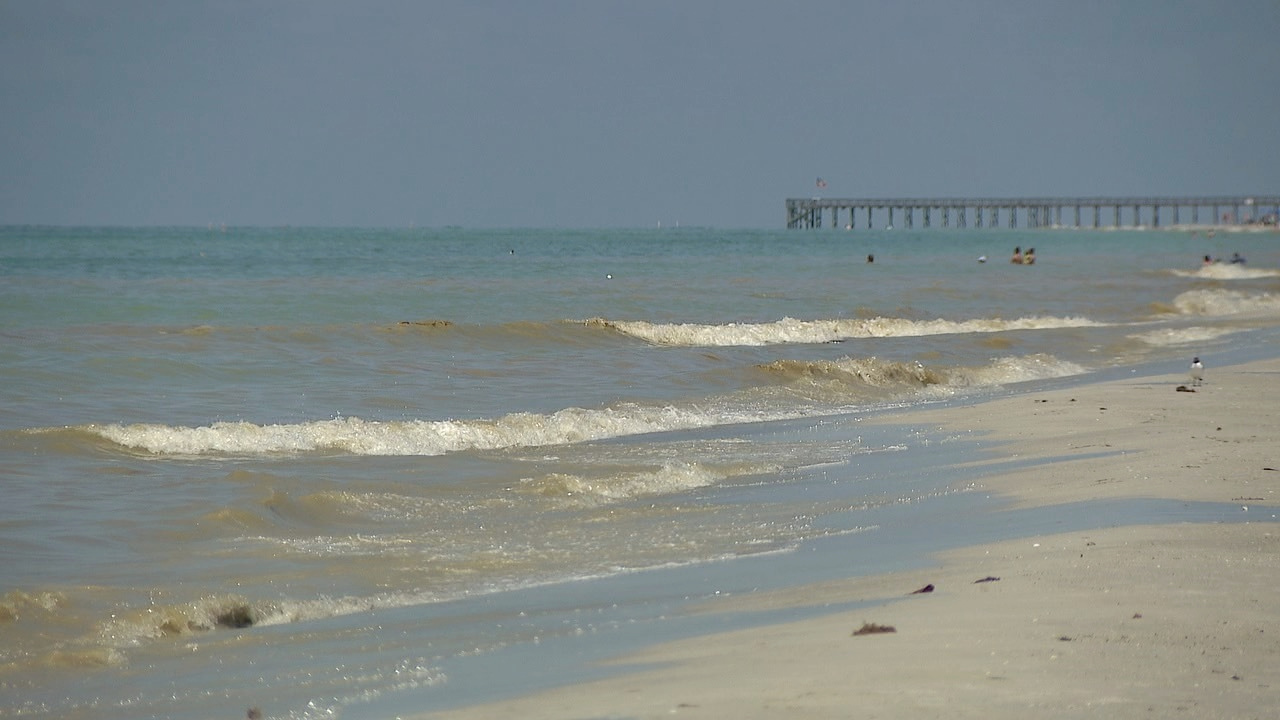UPDATE: May 26, 2023
Pinellas County says per their Environmental Management team, no Trichodesmium, blue-green algae also known as sea sawdust, was spotted along any of Pinellas County's coastline on Wednesday, May 24. Crews will be back out monitoring the coastline Friday afternoon but they believe the coastline will still be clear, as long as we won't receive strong onshore winds. The update is promising for those hoping to enjoy the Memorial Day weekend on the sandy shores of Pinellas County.
ORIGINAL STORY: May 18, 2023
It’s a sight you probably wouldn’t want to see greeting you when you step on the beach: brownish, discolored water. But unfortunately, some people have recently spotted that at a few beaches in Pinellas County.
“Brownish three, four feet in, and then it clears up,” said Kelley Videtti.
Videtti was taking a stroll along the beach in Redington Shores, but the discolored water crashing with the waves was hard to miss.

“I was here like three days ago, and I took a picture of my feet in the water because the water was crystal clear,” said Videtti.
ABC Action News saw the brownish film on the water at Madeira Beach on Thursday. People enjoying the day said they spotted it almost immediately.
Pinellas County said if you notice discolored water, it’s likely Trichodesmium, blue-green algae known as sea sawdust. The county said it’s part of a patchy bloom that moves with the wind and currents.
FWC said small blooms look like sawdust floating on the water surface and that blooms have a sweet smell similar to freshly cut hay when they decay.
“It’s really common in the open ocean, and it’s again one of our more common bloom formers that often occurs in the late spring and early summertime. It’s driven by dust from the Saharan desert,” said Dr. Mike Parsons.
Parsons is a professor of Marine Science at the Water School at Florida Gulf Coast University. ABC Action News asked him if this is harmful to people or pets.
“No, it is not,” said Parsons. “Now, given that it’s not necessarily harmful if you ingested a lot of it, you may end up feeling ill. It’s like you shouldn’t eat too much ice cream and things like that. It’s not considered to be a toxic algae in terms of having really potent chemicals in it, but if you are exposed to a lot of it, again, if you’re ingesting a gallon of it or if you’re swimming around in it all day, you might experience some irritations.”
According to FWC, researchers have not documented any adverse effects on marine life or people in Florida.
Despite the unpleasant view, beachgoers didn’t let it spoil their day.
“Just go through it and enjoy the water,” said Videtti. “Enjoy the water!”





